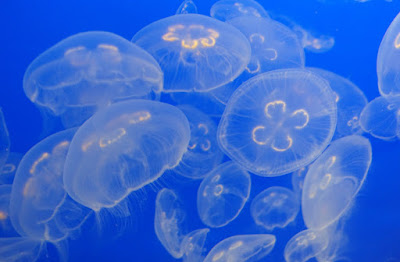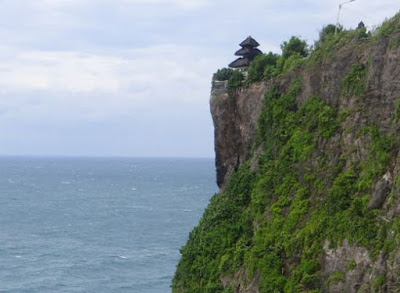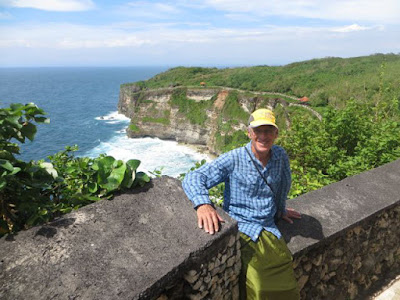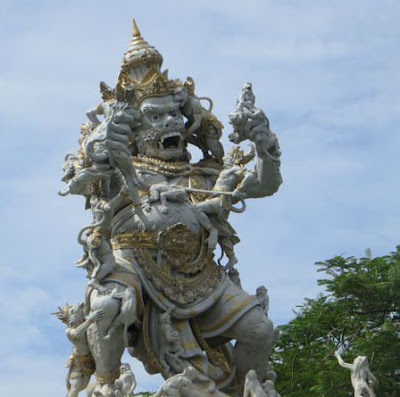 |
| Jellyfish at the Monterey Bay Aquarium, Monterrey, CA |
In late December I went with my family to the Monterey Bay Aquarium in California. At this world-famous museum, perched at the edge of Monterey Bay in a building that was once part of the real Cannery Row in the days of John Steinbeck, and now at the heart of a thriving tourist area, one can watch sea otters doing acrobatics in their giant tank, see a diver in a kelp bed, witness sharks being fed, gaze at jellyfish floating like undersea spaceships, and much much more.
 |
| Kelp Forest |
We arrived early in the day, at 10:00 when the Aquarium opened, having bought our tickets ahead of time. Even so, the museum was crowded due to the holiday break and we had to be patient to get our turn at each window. Shortly after we arrived, the sea otters were being fed, but there were so many people around their tank, that we decided to return later. When we did, we got a close-up look as the otters glided past the underwater window and we were glad we waited.
 |
| Jellyfish with bioluminesence |
We headed toward the popular jellyfish exhibit, stopping on the way to watch the school of sardines whirl around and around in their circular tank. I never lose my sense of wonder at the variety of shapes and colors of jellyfish and watching the delicate pulsations that propel them through the water–some of them resemble tiny lanterns and others are more like underwater hot-air balloons.
 |
| Octopus |
I was particularly interested in seeing the cephalopod exhibit, new since my last visit to the Aquarium a number of years ago. Cephalopods are the group that include octopuses, squid and the chambered nautilus. At the entrance to the exhibit is a fascinating display of how these animals have been perceived in art and literature since ancient times. I had learned about the amazing ability of octopuses when I wrote my book
Octopuses: Escape Artists of the Sea. In the recent movie,
Finding Dory, I noticed that the octopus character, although humanized, displays many of the talents of the real animal.
 |
| Cuttlefish |
On the cover of my book,
Living Fossils: Clues to the Past, is a depiction of a chambered nautilus, an animal that closely resembles its ancient relatives. The chambered nautilus is only found in deep waters of the South Pacific, and although I was familiar with is beautiful shell, this was the first time I had seen it alive.
 |
| Chambered Nautiluses |
One of my favorite exhibits at the Aquarium is the kelp forest, depicting the environment the otters inhabit in the bay outside the museum. My granddaughter’s favorite is the tunnel where a giant wave washes over the see-through walls making one feel immersed in the ocean without actually getting wet. We then stopped to explore the touch-tank with its crabs and tide pool life, watch the penguins, and check out a new exhibit featuring life in Baja California. It was a beautiful day and we finished on the outdoor patio after lunch in the museum cafe, enjoying the sunshine and sea air.
 |
| Under the giant wave |
One can go back to the Monterey Bay Aquarium again and again, preferably on a day when it is not so busy. But there is always something new and the exhibits are a reminder that the ocean and the life in it are an essential part of our world and need to be understood and conserved for future generations.
For our visit,we drove down for the day from the San Francisco Bay area, a one way trip of about two hours.
For directions and information about tickets to the Monterey Bay Aquarium, go to their
website. The Monterey Bay Aquarium is a nonprofit institution, devoted to research, conservation and educating the public.
























